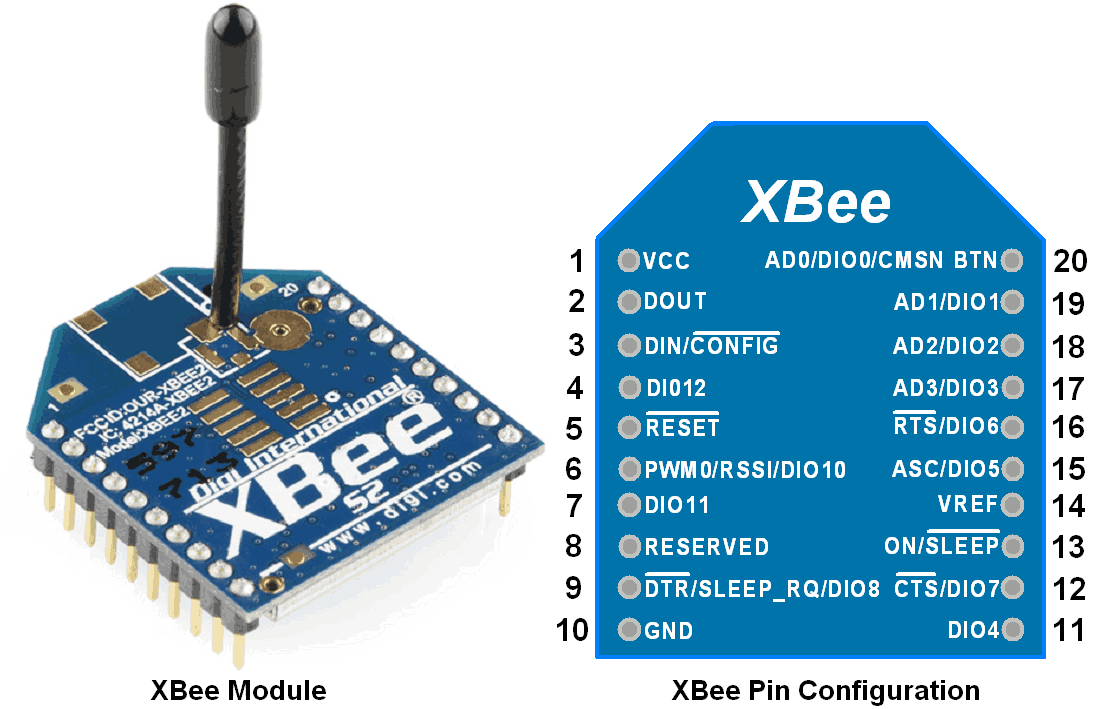1.jpeg)
1.jpeg&width=620&quality=80)

1.jpeg&width=175&quality=80)
1.jpeg&width=172&quality=80)

1.jpeg&width=300&quality=80)
1.jpeg&width=300&quality=80)

XBEE MODULE
What Is Digi XBee? The world-renowned XBee module is part of a family of cellular modems and RF modules that provide ultimate flexibility for IoT application developers, with three programmable form factors, and a range of popular wireless protocols.
₹ 2,600 ₹2,999
2,999
Add FAQ
An XBee module is a type of wireless communication module used for creating wireless networks and communication between devices. XBee modules, developed by Digi International, are popular for their ease of use and reliability in various wireless communication applications, including IoT (Internet of Things) projects, sensor networks, and remote control systems.
Key Features of XBee Modules
-
Wireless Communication:
- XBee modules can operate using different wireless protocols such as Zigbee, 802.15.4, and LTE, depending on the specific model.
- They support mesh networking, point-to-point, and point-to-multipoint communication.
-
Frequency Bands:
- They typically operate in the 2.4 GHz ISM band, but some models support other frequencies like 900 MHz.
-
Ease of Use:
- XBee modules are known for their ease of integration into projects due to their simple serial communication interface.
-
Configuration:
- They are configurable via AT commands or through the XCTU software provided by Digi International.
Common XBee Modules
-
XBee Series 1 (802.15.4):
- Provides basic wireless communication for short-range applications.
- Ideal for simple, non-mesh networks.
-
XBee Series 2 (Zigbee):
- Supports Zigbee protocol, allowing for more complex networks with mesh capabilities.
- Suitable for larger networks where devices need to communicate over longer distances and through multiple hops.
-
XBee Cellular (3G/4G LTE):
- Allows communication over cellular networks.
- Used for remote applications where Wi-Fi or direct RF communication isn’t practical.
-
XBee-PRO:
- High-power versions of the standard XBee modules, providing extended range and better communication reliability.
Basic Wiring and Usage
To use an XBee module, you typically need the following:
-
XBee Module:
- The main component used for wireless communication.
-
XBee Adapter or Breakout Board:
- Allows you to connect the XBee module to a development board like an Arduino or Raspberry Pi.
- Provides the necessary power and serial connections.
-
Power Supply:
- XBee modules usually require 3.3V DC power. Ensure you use a regulated power supply or a voltage regulator.
-
Microcontroller or Computer:
- To interface with the XBee module and handle data transmission and reception.
Basic Connections
-
Connecting to Arduino:
- Connect the TX pin of the XBee module to the RX pin on the Arduino.
- Connect the RX pin of the XBee module to the TX pin on the Arduino.
- Connect the GND pin of the XBee module to the GND pin on the Arduino.
- Connect the VCC pin of the XBee module to a 3.3V power source.
-
Programming and Configuration:
- Use XCTU software to configure the XBee modules. XCTU allows you to set various parameters like network ID, communication channels, and more.
- You can also use AT commands sent via a serial terminal to configure the modules.
Example Application
If you want to use XBee modules to create a simple wireless communication link between two Arduinos:
-
Set Up XBee Modules:
- Configure one XBee module as the Coordinator (or Gateway) and the other as an End Device using XCTU.

0 Reviews For this Product















.jpg&width=225&quality=80)
